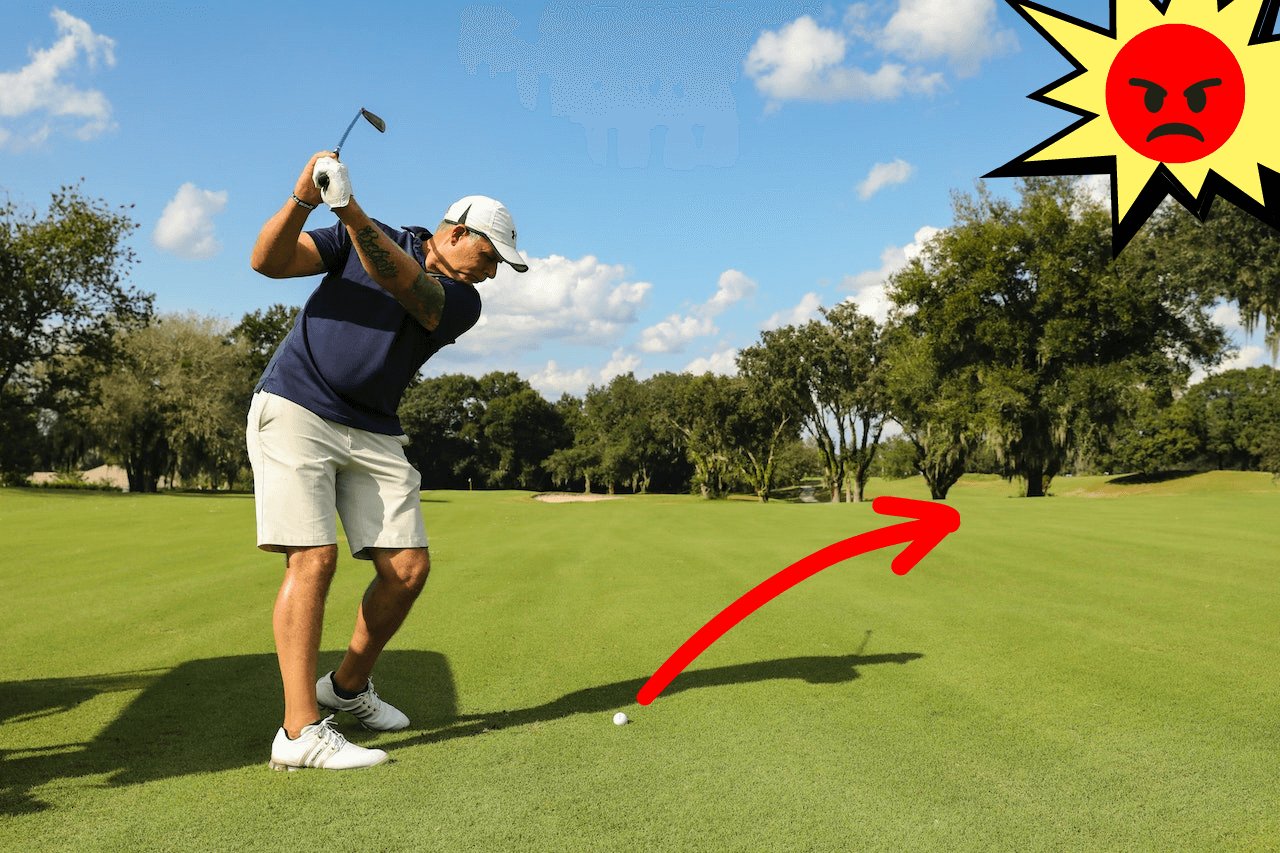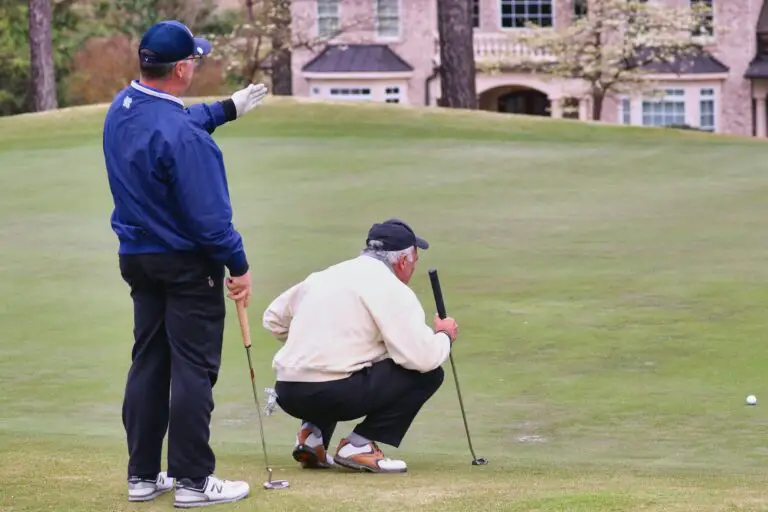Never Shank Again: How to Stop Shanking the Golf Ball

Welcome to our article on the dreaded “shanks”! If you’re a golfer, you’ve likely experienced the frustration of hitting a shank shot at some point in your career. But don’t worry, you’re not alone. In this article, we’ll explain what the “shanks” are, how they happen, and most importantly, how to get rid of them. So let’s get started on understanding and overcoming the “shanks”!
What are the “Shanks”?
The “shanks” refer to a type of golf shot where the ball is hit with the hosel (the part of the clubhead that connects to the shaft) rather than the clubface. This results in the ball flying off to the side, usually to the right for right-handed players, and can cause a loss of distance and accuracy. The term “shanks” comes from the Old English word “scanca,” which means “leg,” and refers to the fact that the shot is often hit from the heel of the club.
Hitting a shank shot can be a frustrating and embarrassing experience for golfers, as it is often accompanied by a loud, metallic sound and can result in a poorly struck shot that doesn’t go very far. It’s also known as the “hosel rocket” or “hosel gun,” as the ball seems to shoot off the club like a rocket or gun. If you’ve hit a shank before, you know the feeling all too well! But don’t worry, there are ways to improve and prevent this type of shot from happening. We’ll delve into that in the next section.
How do the “Shanks” Happen?
There are a few common causes of the “shanks,” which can be helpful to understand in order to avoid them. One cause is an incorrect grip on the club. If your grip is too weak (i.e., your hands are rotated too far to the left on the club for a right-handed player), you may be more prone to hitting a shank. A grip that is too strong (hands rotated too far to the right) can also lead to shanks, as well as other types of poor shots.
Another common cause of the “shanks” is a misalignment of the body and club at address. If your body is pointing too far to the left or right of your target, it can cause your club to make contact with the ball off-center, leading to a shank.
Lastly, a poor swing path can also contribute to hitting a shank. If your swing is too steep or too shallow, it can result in the clubhead approaching the ball from the wrong angle, causing it to make contact with the hosel rather than the clubface.
Now that we’ve covered some of the main causes of the “shanks,” let’s move on to how to fix them.
How to Get Rid of the “Shanks”
If you’re struggling with the “shanks,” don’t despair! There are a few key things you can do to improve your swing and reduce the likelihood of hitting this frustrating shot.
One thing you can try is adjusting your grip. Make sure you have a neutral grip on the club, with your hands positioned roughly in the middle of the handle. You can check your grip by placing your club on the ground and seeing where your hands fall in relation to the clubhead. If they are too far to the left or right, adjust accordingly.
Next, pay attention to your body alignment at address. Make sure your shoulders, hips, and feet are all aligned with your target. This will help ensure that your club is approaching the ball from the correct angle.
You should also work on improving your swing path. A good way to do this is by practicing swinging your club along a straight line, rather than across your body. This will help you get a feel for the proper swing path and reduce the chances of hitting a shank.
Finally, consider seeking the help of a teaching professional. A golf pro can watch your swing and provide you with specific tips and drills to help you improve and eliminate the “shanks.”
With some practice and patience, you can learn to overcome the “shanks” and hit more consistent, solid shots. Don’t get discouraged and keep working on your swing – it will pay off in the long run!
Tips for Preventing the “Shanks”
While it’s not possible to completely eliminate the risk of hitting a shank, there are a few things you can do to reduce the likelihood of this shot happening. Here are some tips for preventing the “shanks”:
1) Work on your grip
As mentioned earlier, having a neutral grip on the club can help prevent the “shanks.” Practice holding the club with a light but firm grip, and make sure your hands are positioned evenly on the handle.
2) Check your alignment
Make sure your body is properly aligned with your target at address. This will help ensure that your club is approaching the ball from the correct angle and reduce the chances of hitting a shank. Additionally, make sure you are not standing too close or too far away from the golf ball. This can also cause misalignment in your swing.
3) Swing along a straight line
Practice swinging your club along a straight line, rather than across your body. This will help you develop a good swing path and improve your shot accuracy.
4) Use proper technique
Practice good golf swing technique, such as keeping your head still and making a full shoulder turn. This will help you hit more solid shots and reduce the risk of hitting a shank.
By following these tips and practicing regularly, you can improve your golf swing and reduce the chances of hitting a shank. Remember, it takes time and effort to improve your game, but with dedication and persistence, you can become a better golfer.
Final Thoughts: Mastering Your Golf Swing and Avoiding the “Shanks”
In this article, we’ve covered what the “shanks” are and how they happen, as well as how to fix and prevent them. By paying attention to your grip, alignment, swing path, and technique, you can improve your golf swing and hit more consistent, solid shots. Remember, it takes time and practice to master your swing, so don’t get discouraged if you’re still struggling with the “shanks” – keep working on it and you’ll see improvement over time.






